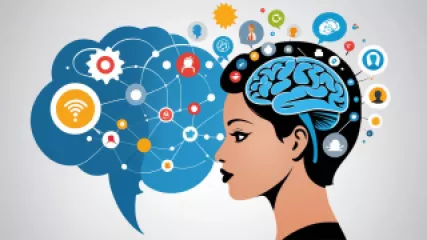Uncovering the Psychology of Belief: A Research Summary
Uncovering the Psychology of Belief: A Research Summary
Beliefs play a fundamental role in shaping our perceptions, decisions, and behaviors. They act as the lens through which we interpret the world around us, guiding our interactions and influencing the trajectory of our lives. Understanding the psychology of belief is crucial, as it can shed light on the complex interplay between our cognitive processes, emotional experiences, and the social and cultural contexts that shape our inner landscape.
In this comprehensive research summary, we delve into the multifaceted aspects of belief formation, maintenance, and transformation. Drawing from a diverse body of psychological research, we explore the cognitive biases, self-limiting beliefs, and belief restructuring techniques that can profoundly impact our lived experiences.
The Roots of Belief: Cognitive Biases and Heuristics
At the core of belief formation lies the innate human tendency to rely on cognitive biases and heuristics, or mental shortcuts, to navigate the overwhelming complexity of our environment. These biases, deeply ingrained in our cognitive architecture, can lead us to make decisions and form beliefs that may not always align with objective reality.
One prominent example is the confirmation bias, wherein we tend to seek out and interpret information that reinforces our existing beliefs, while often dismissing or overlooking contradictory evidence. This bias can perpetuate the entrenchment of our beliefs, even in the face of compelling counter-evidence.
"Our minds are shaped by the information we are exposed to, and we have a natural tendency to seek out and interpret data in a way that confirms our preexisting beliefs. This can lead to a distorted, biased understanding of the world around us."- Genesis Sullivan, cognitive psychologist
Another influential cognitive bias is the availability heuristic, which leads us to make judgments based on the information that is most readily available or memorable to us, rather than on a comprehensive analysis of all relevant data. This bias can cause us to overestimate the likelihood of events that are more salient or vivid in our minds, while underestimating the probability of less prominent occurrences.
The anchoring effect, whereby our judgments and decisions are heavily influenced by the first piece of information we encounter, can also play a significant role in shaping our beliefs. This bias can make us vulnerable to manipulation, as the initial "anchor" can skew our subsequent perceptions and evaluations.
The Malleability of Belief: Self-Limiting Beliefs and Belief Restructuring
While cognitive biases and heuristics contribute to the formation and persistence of our beliefs, it is important to recognize that beliefs are not static or immutable. Our beliefs can be influenced, challenged, and transformed through various psychological processes, including the recognition and restructuring of self-limiting beliefs.
Self-limiting beliefs are the deep-seated, often subconscious, assumptions that we hold about ourselves, our capabilities, and our potential for growth. These beliefs can act as barriers to our personal and professional development, constraining our aspirations and undermining our ability to achieve our goals.
"Self-limiting beliefs are like mental shackles that hold us back from realizing our full potential. By identifying and challenging these beliefs, we can unlock new possibilities and cultivate a more empowered, expansive mindset."- Phil Bryant, belief coach
Belief restructuring, a core component of cognitive-behavioral therapy (CBT) and other evidence-based psychological interventions, offers a powerful approach to overcoming self-limiting beliefs. This process involves systematically examining the accuracy and validity of our beliefs, challenging the underlying cognitive distortions, and replacing them with more constructive, adaptive beliefs.
Through belief restructuring, individuals can learn to reframe their perspectives, adopt a growth mindset, and engage in behaviors that align with their desired outcomes. This dynamic process can lead to significant improvements in mental health, personal well-being, and overall life satisfaction.
The Social and Cultural Influences on Belief
Belief formation and maintenance are not solely individual phenomena; they are deeply embedded within the social and cultural contexts in which we live. Our beliefs are shaped by the norms, values, and narratives prevalent in our communities, as well as the influential messages we receive from our family, peers, and societal institutions.
The power of social influence is particularly evident in the phenomenon of groupthink, where individuals within a cohesive group tend to conform to the dominant beliefs and perspectives, often at the expense of critical thinking and openness to alternative viewpoints. This dynamic can reinforce existing beliefs, even in the face of contradictory evidence, and make it challenging for individuals to challenge or change their beliefs.
"Beliefs don't exist in a vacuum; they are heavily influenced by the social and cultural environments we inhabit. Understanding these contextual factors is crucial for recognizing the biases and assumptions that underlie our belief systems."- Heaven Warren, social psychologist
The cultural narratives and belief systems that shape our worldviews can also play a significant role in belief formation. From religious teachings to political ideologies, the belief structures that are prevalent in our societies can have a profound impact on how we perceive and interpret the world around us.
Recognizing the social and cultural influences on belief is essential for developing a more holistic understanding of the psychology of belief. By examining these contextual factors, we can gain insights into the complex interplay between individual cognition and the broader societal forces that shape our beliefs.
The Transformative Power of Belief Restructuring
Belief restructuring, a cornerstone of cognitive-behavioral therapy (CBT), has emerged as a powerful tool for facilitating lasting change in individuals' beliefs, emotions, and behaviors. This approach involves a systematic process of identifying and challenging maladaptive beliefs, and replacing them with more constructive, evidence-based beliefs.
At the heart of belief restructuring lies the recognition that our beliefs are not necessarily accurate reflections of reality, but rather mental constructs that can be reshaped and transformed. By examining the validity and functionality of our beliefs, we can gain a deeper understanding of the cognitive distortions and biases that may be influencing our perceptions and decision-making.
"Belief restructuring is not just about changing what we think; it's about changing how we think. By cultivating a more flexible, evidence-based approach to our beliefs, we can unlock new possibilities and foster sustainable, meaningful change in our lives."- Harris Little, clinical psychologist
Through the process of belief restructuring, individuals can learn to identify and challenge their self-limiting beliefs, such as "I'm not capable of success" or "I'll never be able to change." By replacing these beliefs with more empowering, adaptive perspectives, such as "I can develop the skills I need to succeed" or "I am capable of growth and transformation," individuals can experience profound shifts in their emotional well-being, behaviors, and overall life outcomes.
Belief restructuring has been widely studied and implemented across various therapeutic modalities, including cognitive-behavioral therapy (CBT), acceptance and commitment therapy (ACT), and positive psychology interventions. The effectiveness of this approach has been demonstrated in the treatment of a wide range of mental health conditions, such as depression, anxiety, post-traumatic stress disorder (PTSD), and addictive behaviors.
The Neurological Underpinnings of Belief Formation and Transformation
The psychology of belief is not solely a product of our conscious thought processes; it is also deeply rooted in the neurological mechanisms that govern our cognition and emotional regulation. Recent advances in neuroscience have shed light on the complex interplay between the brain's structures, neural pathways, and the formation, maintenance, and transformation of our beliefs.
One key area of research has focused on the role of the prefrontal cortex, the region of the brain responsible for higher-order cognitive functions, such as decision-making, problem-solving, and emotional regulation. Studies have shown that the prefrontal cortex is actively involved in the process of belief formation, as it helps us to integrate new information, evaluate its relevance, and update our existing beliefs accordingly.
"The prefrontal cortex acts as a kind of neural command center, helping us to navigate the complex landscape of our beliefs and beliefs. When this region is functioning optimally, we're better equipped to challenge and restructure our beliefs in a flexible, adaptive manner."- Genesis Sullivan, cognitive neuroscientist
Additionally, the amygdala, a small almond-shaped structure in the brain, has been identified as a key player in the emotional processing of our beliefs. The amygdala is responsible for triggering the body's stress response and can influence our emotional attachment to our beliefs, making it more challenging to let go of deeply held, yet potentially maladaptive, belief systems.
Interestingly, research has also suggested that the process of belief restructuring may be accompanied by changes in neural connectivity and brain activity. By engaging in cognitive-behavioral interventions that target our beliefs, individuals may experience neuroplastic changes, or the brain's ability to reorganize and adapt its neural pathways in response to new experiences and learned behaviors.
These neurological insights not only deepen our understanding of the psychological mechanisms underlying belief formation and transformation but also offer promising avenues for the development of more targeted, evidence-based interventions to facilitate positive changes in individuals' belief systems.
Conclusion: Embracing the Fluidity of Belief
In this comprehensive research summary, we have explored the multifaceted nature of the psychology of belief, delving into the cognitive biases and heuristics that shape our perceptions, the malleability of self-limiting beliefs, and the social and cultural influences that permeate our belief systems.
Ultimately, the psychology of belief is a dynamic and ever-evolving field, one that challenges us to embrace the fluidity of our own beliefs and the fundamental role they play in shaping our lived experiences. By cultivating a deeper understanding of the cognitive, emotional, and contextual factors that influence our beliefs, we can empower ourselves to engage in the transformative process of belief restructuring, unlocking new possibilities for personal growth, emotional well-being, and fulfilling lives.
As we continue to uncover the complexities of the psychology of belief, we are presented with an opportunity to reframe our relationship with our own beliefs, to approach them with curiosity, critical thinking, and a willingness to adapt and evolve. In doing so, we may unlock the full potential of our cognitive and emotional capacities, empowering ourselves and others to navigate the ever-changing landscape of our beliefs with greater clarity, resilience, and purpose.






